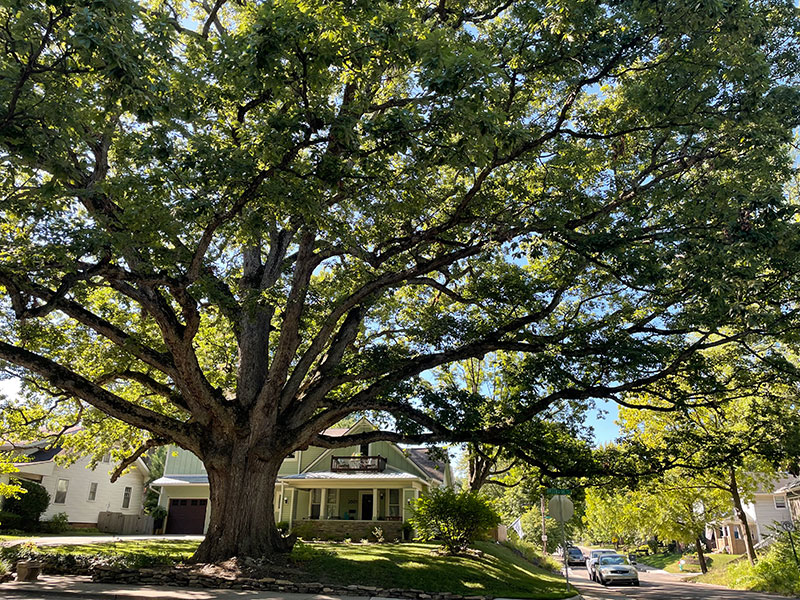 Temple Oak in Indianapolis, Indiana.
Temple Oak in Indianapolis, Indiana.
What is a Heritage Tree?
A heritage tree is a tree identified to be significant due to its age, size, cultural or ecological value, unique shape, or species. Tree ordinances may provide protection for heritage trees with a more limited definition, and these trees may also be referred to as legacy trees, historic trees, special interest or significant trees, specimen trees, or landmarks.
Benefits of Mature Trees
Large, mature trees are more than just cool to look at. They provide benefits that younger trees may not, including:
- Storing a larger amount of CO2 than younger trees (Lindenmayer et al. 2013 Table S1)
- Reducing stormwater runoff with a larger capacity for water uptake (Lindenmayer et al. 2013 Table S1)
- Improving air quality with a larger capacity for taking in air pollution (Turner-Skoff and Cavender 2019)
- Providing habitat, food, and migration resting spots for wildlife (Blewett and Marzluff 2005, Lindenmayer et al. 2013 Table S1)
- Creating spiritual and cultural value for communities (Dafni 2006)
- Providing the most benefits overall to offset costs of tree maintenance across the lifespan of trees (Vogt et al. 2015)
References
Blewett, Christina M., and John M. Marzluff. "Effects of urban sprawl on snags and the abundance and productivity of cavity-nesting birds." The Condor 107.3 (2005): 678-693.
Dafni, Amots. "On the typology and the worship status of sacred trees with a special reference to the Middle East." Journal of Ethnobiology and Ethnomedicine 2 (2006): 1-14.
Lindenmayer, David B., et al. "New policies for old trees: averting a global crisis in a keystone ecological structure." Conservation Letters 7.1 (2014): Table S1.
Turner-Skoff, J. B., and N. Cavender. "The benefits of trees for livable and sustainable communities.” Plants People Planet 1.4 (2019): 323–335.
Vogt, Jess, Richard J. Hauer, and Burnell C. Fischer. "The costs of maintaining and not maintaining the urban forest: A review of the urban forestry and arboriculture literature." Arboriculture & Urban Forestry (AUF) 41.6 (2015): 293-323.
